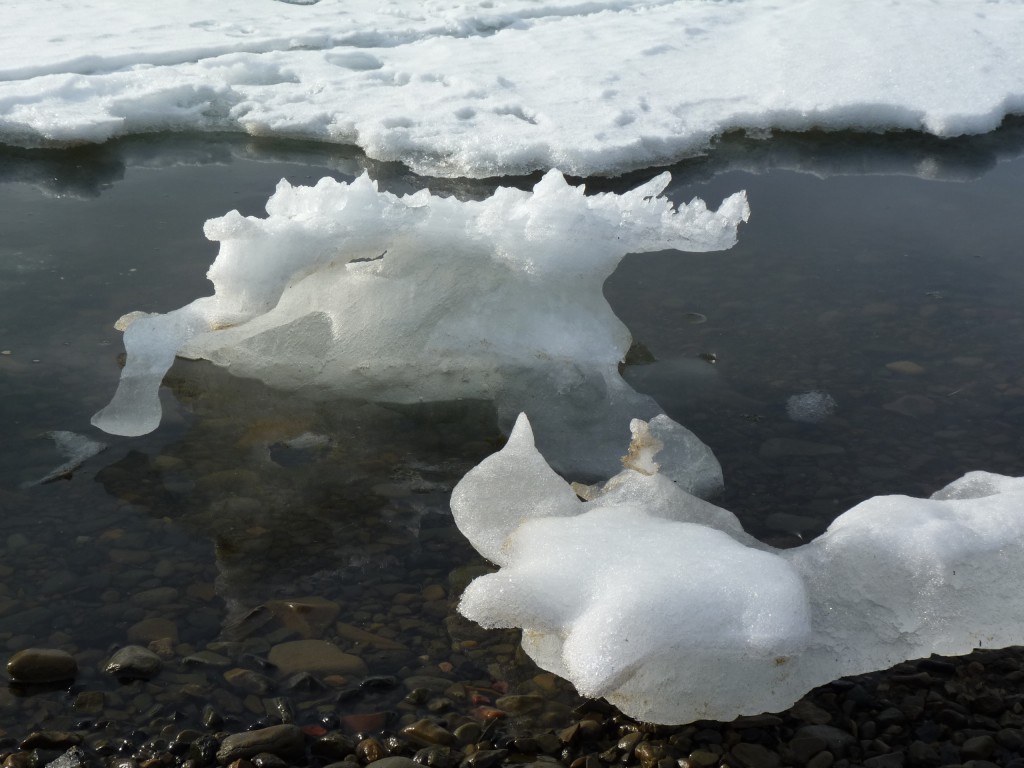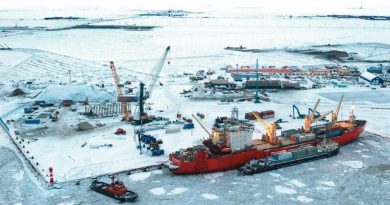Ice-Blog: Arctic icon in decline
As I plan my coverage of this year’s annual UN climate conference, this time in Peru, a news item from WWF pops up in my mail box.
The organization is concerned that the number of polar bears in the Beaufort See in Alaska and in north-western Canada has dropped by around 40 percent in the last ten years. Now that is a very worrying statistic.

It is based on a study published in the journal Ecological Applications: Polar bear population dynamics in the southern Beaufort Sea during a period of sea ice decline.
In 2004, it seems 1,500 polar bears were counted. The latest count showed just 900. Declining sea ice and a lack of prey seem to be the likeliest causes. Another piece of evidence to justify the decision in 2008 to list polar bears under the US Endangered Species Act.
WWF fears the worrying trend will continue if climate change is not halted. There are only between 20,000 and 25,000 polar bears left in the world. With the average air temperature in the Arctic a good five degrees centigrade higher than it was a hundred years ago, it is hardly surprising that nature is struggling to cope. As the sea ice declines, the bears are losing their habitat. You might also remember the pictures of all those walruses on the beach a few weeks ago. They too, were affected by the decline of the sea ice where they usually rest between dives.
So what can we do to halt the decline in the polar bear population? This brings me back to the forthcoming climate conference in Peru. I am finding it difficult to arouse interest in this year’s meeting. “Paris next year is the important one”, I hear. So does climate action just get put on hold for another 12 months? Tell that to the polar bears. One single conference cannot save the world from the climate catastrophes that could lie ahead if the world does not manage to reduce its emissions drastically in the next few years. UNEP’s “Emissions Gap Report 2014”, just published yesterday, says we have to be carbon-neutral by the 2nd half of this century to keep temperature rise below two degrees centigrade. There is still a huge gap between the pledges made by countries within the UNFCCC framework and what is necessary for that. Emissions would have to peak within the next ten years, says the UNEP report, based on the latest IPCC data. Otherwise we risk severe and irreversible climate change with all the droughts, floods and other impacts that come with it.

Given the need for urgent action, I fail to understand how anyone can say “forget Peru, wait for Paris”. I would be the first to stress that these conferences alone cannot halt climate change. The switch to renewable energy is already underway. But ultimately, governments have to agree to binding targets. We have seen encouraging signs from the top emitters China and the USA. Without those international negotiations, this is unlikely to have happened. Let us take the Peru conference as an opportunity to focus world interest on the urgency of climate action. Countries have to keep doing there homework. I don’t know if we will be able to turn our energy policies around in time to save the bears. But if they are to have any chance – at the risk of sounding clichéd: the time for action is now, and any major climate event is a chance to say so.
Related stories from around the North:
Canada: Report spotlights rapid glacier melt in Canada and Alaska, Radio Canada International
Greenland: Field notes from Greenland – From the glacier to the sea, Blog by Mia Bennett
Russia: Arctic methane: time bomb or “boogeyman”?, Analysis from Deutsche Welle’s Iceblogger
Sweden: Mapping Sweden’s 250-odd glaciers, Eye on the Arctic
United States: NASA findings show no excessive methane emissions from Alaska, Alaska Dispatch





